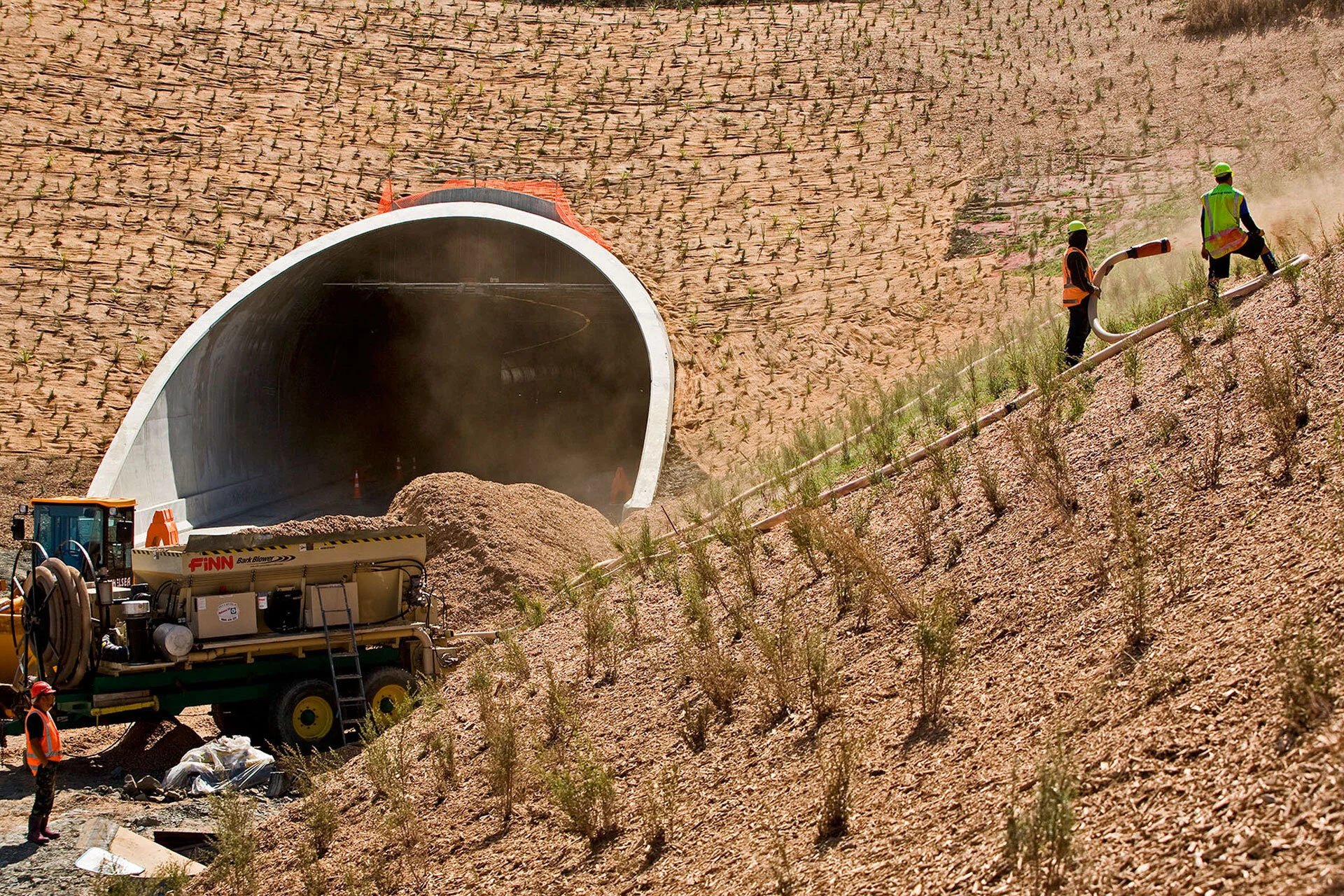Alpurt Motorway
Road meets restoration in ancient clay soils.
The Auckland Northern Motorway has been a multi-year marathon for NZTA. Carving a major state highway through geologically complicated terrain was certainly a complex task for the many engineers and designers involved. Our job was to fill the landscape with the perfect plants ready to take on support this ecologically-sensitive mission.
Ecosystem: A tunnel of native bush coast-to-coast
The Johnstone’s Hill tunnels are bored beneath one of the few places in New Zealand where native bush extends from the East to West coasts. A critical factor in the Alpurt project design and implementation was to ensure that this corridor ecosystem was not just protected, but enhanced and established for eco-sustainability.
So a key consideration for us was the selection of species that would connect a bush corridor between the two coasts for bird and fauna life to thrive and provide an environment for the future regeneration of the podocarp forest.
Along the way we learned that well laid out plans on paper (well, design software but you get it) is one thing, but working with Mother Nature is where theory meets reality.
As the overpass was in construction a 55m deep cut into Chin Hill exposed a mixture of sedimentary rock being pushed up by sub terrain volcanic activity from the Kaipara. Landslides on the slippery back interfaces of these rock formations changed the areas / sizes of ‘cut and fill’ and the knock-on effect was a change in plant volumes. This, coupled with the length of the earthwork proceeding the planting season, meant that we had to be very flexible on our planting volumes and timing.
Further, as the project evolved the species list changed. The soil types in the ‘cut and fill’ zones were found to be poor ancient clay types. This meant that many of the species originally ordered would not survive. Losses in initial trial stages showed that the range and species diversity needed to be narrowed without compromising the ecological goals. This was a marathon of a proejct that required a few agile sprints.
Ecovitalism: One million plants on a mission
The Alpurt project has been a major economic growth tool. It allows State Highway 1 traffic to bypass Orewa, easing traffic flow through the town and supporting the growth of a key centre for the Auckland region and supports the Orewa community's efforts to re-establish the strong connection between town and beach, a focal point of the town's identity long threatened by traffic congestion.
We’re proud to have been trusted to join the NZTA team of engineers and ecotvitalists and put more than one million plants into the ground to protect an important ecological corridor connecting the West to the East coasts.
Mother Nature knows what she wants and species range and survival wasn’t an easy path to navigate. Our experience taught us that this was typical of kauri and tanekaha forest ecosystems and we know enough to know to copy what nature does naturally and to play to the dynamics and strengths of the ecosystem we find – and create.








